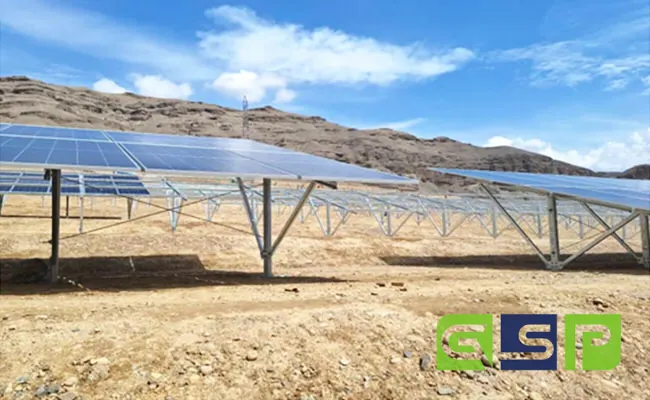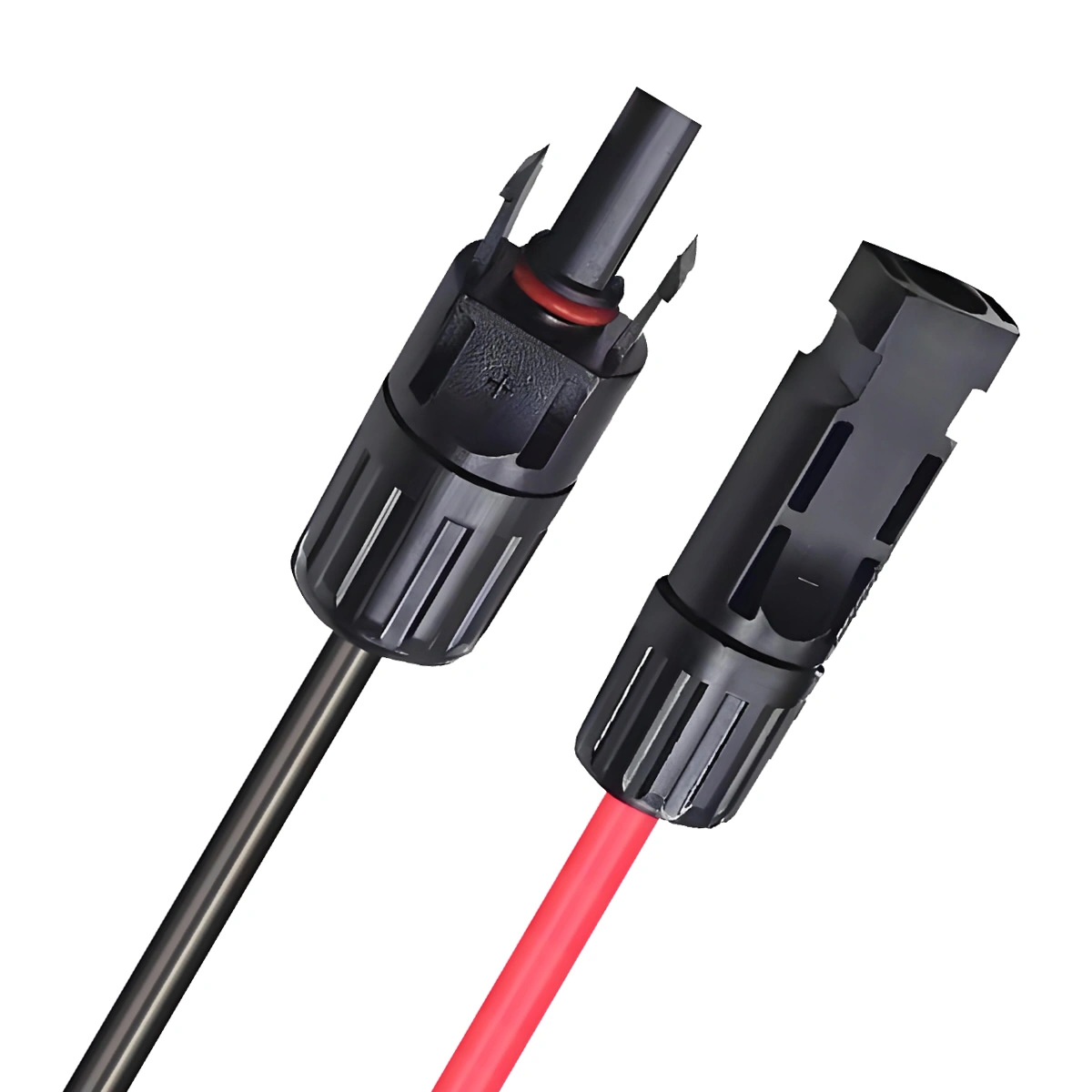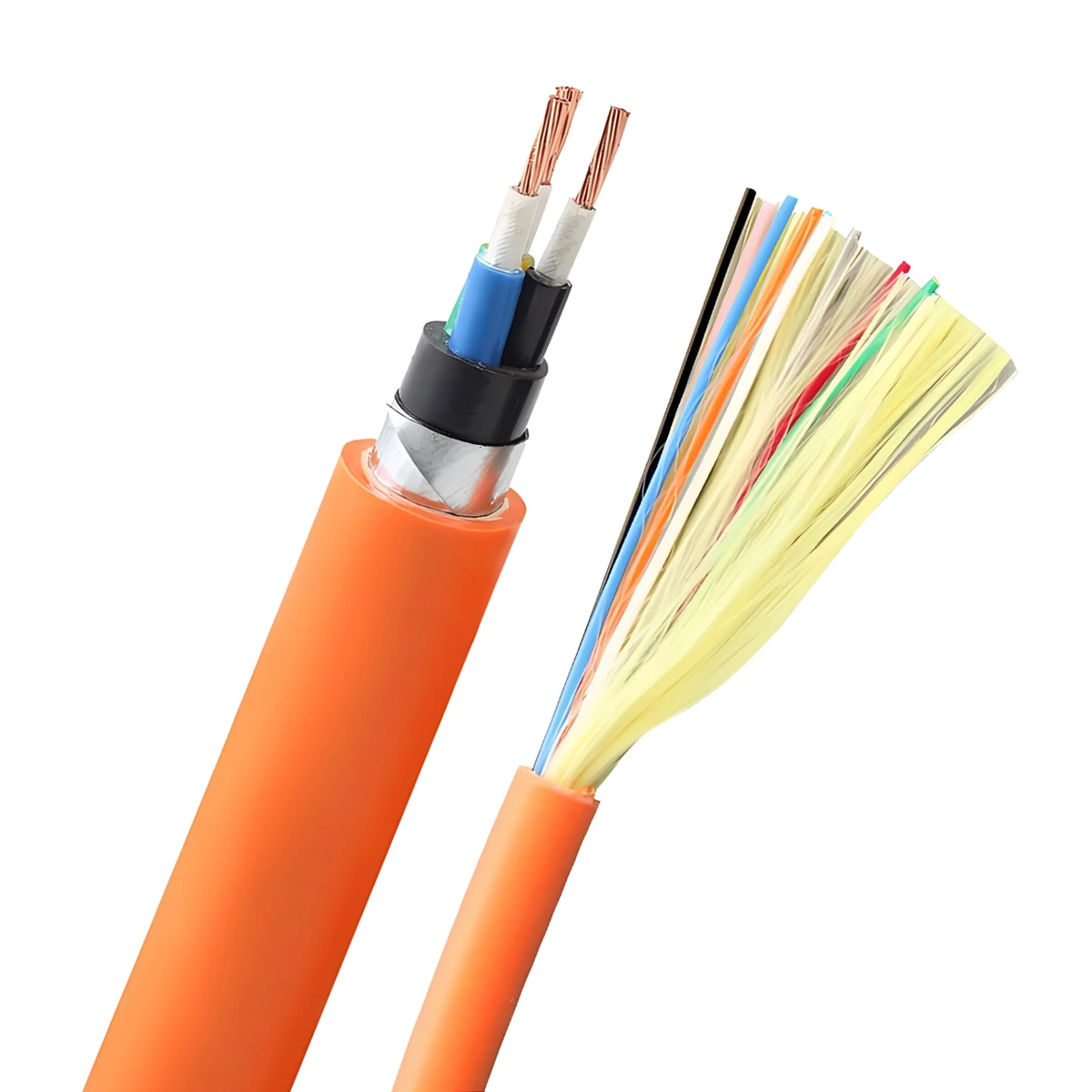Earth Rod
Solar earth rod is primarily used for grounding solar panel mounts. There is a potential difference between the photovoltaic modules and the ground, which can lead to faults like leakage and inductive coupling in poor environments. To ensure the normal operation and safety of the photovoltaic system, it is necessary to establish a reliable grounding system.
ZMS’s range of earth rod products for photovoltaic system includes copper ground rod, copper bonded steel and galvanized steel.
ZMS offers a variety of grounding materials in different shapes, such as cylindrical and flat strips. Cylindrical earth rods are available in various styles to suit different applications: one pointed end and one flat end, one pointed end and one threaded end, both ends threaded, etc.
Applications:
- Grounding for solar panel mounts
- Grounding for inverters
- Grounding for distribution boxes
- Lightning protection grounding for systems
- Grounding for communication line shielding

ZMS Solar Earth Rod Series
ZMS offers galvanized steel, copper bonded steel, bare copper grounding rods for normal PV projects. And we can also produce copper-zinc alloy earth rods and stainless steel earth rods, which are suitable for environments with corrosive media.

Galvanized Steel
Galvanized steel is a traditional grounding material with a certain level of corrosion resistance and conductivity. While this material may have the lowest initial cost, its shorter lifespan and higher maintenance costs can make it more expensive in the long run. ZMS’s galvanized steel earth rods are more suitable for short-term PV projects in areas with low corrosion resistance requirements.

Copper Bonded Steel
Copper bonded steel combines the mechanical properties of steel with the conductivity and corrosion resistance of copper. It has become the most widely used grounding component in solar power systems in recent years. ZMS uses 99.9% pure copper electroplated onto a low-carbon steel core, resulting in high conductivity, high tensile strength, strong corrosion resistance, and easy installation. The ZMS copper bonded ground rod features a nickel layer on the steel core, which is then covered with an electrolytic copper layer. This process ensures a permanent molecular bond between the copper layer and the steel core, preventing cracks even when the rod is bent.

Bare Copper Conductor
Pure copper material offers excellent conductivity and corrosion resistance. Its conductivity is better than that of copper bonded steel. Pure copper earth rods have a service life of up to 40 years but are softer and prone to bending, making them unsuitable for drilling in harder soils. Due to its higher cost, pure copper earth rods are typically used in situations requiring extremely high conductivity.

Copper Bonded Steel Grounding Rod Specification
| Structural Form | Diameter /mm | Length /mm | Weight /kg |
| Standard | 14 | 2500 | 3.16 |
| 14 | 3000 | 3.79 | |
| 16 | 2500 | 4.00 | |
| 16 | 3000 | 4.80 | |
| 18 | 2500 | 5.00 | |
| 18 | 3000 | 6.00 | |
| 20 | 2500 | 6.25 | |
| 20 | 3000 | 7.50 | |
| 22 | 2500 | 8.00 | |
| 22 | 3000 | 9.60 | |
| 25 | 2500 | 9.80 | |
| 25 | 3000 | 11.76 | |
| Combined | 14.2 | 1200 | 1.53 |
| 14.2 | 1500 | 1.88 | |
| 17.2 | 1200 | 2.18 | |
| 17.2 | 1500 | 2.73 |
Unique Manufacturing Process: Utilizing a cold-rolling and hot-drawing production process, ZMS achieves a metallurgical bond between copper and steel. This allows the rod to be drawn like a single metal without any disconnection, peeling, or cracking.
Superior Corrosion Resistance: The composite interface is created through high-temperature welding with no residues, ensuring the bonding surface is free from corrosion. The thick copper layer on the surface provides strong corrosion resistance and a long service life (over 30 years), reducing maintenance costs for the grounding network.
Enhanced Electrical Performance: The outer layer of high-quality copper offers excellent conductivity, resulting in a much lower inherent resistance compared to conventional materials.

Features of ZMS Copper Bonded Steel Earth Rods
Broad, Safe, and Reliable Application: This product is suitable for grounding construction in various soil moisture, temperature, pH, and resistivity conditions.
Secure and Reliable Connections: Using specialized connecting tubes or thermite welding ensures firm and stable joints.
Easy and Quick Installation: With complete accessories and easy installation, construction speed can be significantly improved.
Increased Grounding Depth: A special connection method allows the rod to penetrate up to 35 meters underground, meeting low-resistance requirements for special applications. The earth rod with one pointed end and one threaded end can be connected in series using a coaxial connector, allowing flexible adjustment of the grounding depth.
Low Construction Costs: Compared to traditional methods using pure copper rods and grounding strips, the cost is significantly reduced.
FAQ
Why Should Solar Power Generation Systems Be Grounded?
Grounding in PV systems is one of the most frequently overlooked issues by PV installation personnel, especially in small-capacity PV systems where grounding and lightning protection are not given much attention.
However, if grounding is not done, errors can occur due to low insulation resistance to ground or excessive leakage currents, affecting power generation and potentially endangering personal safety. Additionally, unshielded or elevated metal parts are more susceptible to lightning strikes. Without grounding, equipment may be struck by lightning, causing significant damage to the PV power generation system.
Grounding in PV systems mainly includes grounding on the solar component side, inverter side, and distribution cabinet side. Proper grounding not only enhances the safety of the solar system but also extends its lifespan.
Which Material Should Be Used for Grounding in Photovoltaic Systems?
Galvanized steel is cheaper, but it has many welded joints, resulting in lower construction efficiency and higher construction costs. Pure copper has excellent conductivity but is expensive. Copper-bonded steel, however, only costs 9.4% more than galvanized steel and offers a much longer service life. Therefore, copper bonded steel electric earth rods are typically chosen as the primary grounding material in solar power systems.
| Earth Rod Material | Galvanized Steel | Bare Copper | Copper Bonded Steel |
| Resistivity Ω.mm | 1.7×10^-7 | 1.73×10^-8 | Depends on copper layer thickness |
| Density g/cm3 | 7.8 | 8.9 | – |
| Corrosion Resistance | 0.065 mm/a | Corrosion rate equivalent to 1/7 of galvanized steel | Comparable to copper before destruction of the copper layer |
| Process Characteristics | Large size of material, high welding requirements, complex construction | Single process, faster than spot welding | Single process, faster than spot welding |
| Operating Life | 7 – 13 | > 40 | > 40 |
| Cost | Low | High | Medium |
What Specifications of Earth Rods Are Commonly Used?
Copper-bonded Steel
In photovoltaic power systems, the horizontal grounding body of copper-bonded steel grounding materials commonly uses Φ10-Φ12 copper-bonded round steel, with a manufacturing length typically of 100 meters per reel. The grounding electrodes use Φ14 or Φ17.2 copper-bonded steel rods.
Connection method: Thermite welding (no external power or acetylene needed), using pure copper for joint materials, with no need for anti-corrosion measures at the welding points.
Galvanized Steel
In traditional grounding grids, horizontal grounding bodies made of hot-dip galvanized steel are generally designed with specifications of 50X5 or 60X6 galvanized flat steel, with a manufacturing length of 6 meters per piece. Vertical grounding electrodes use 50X5 hot-dip galvanized angle steel or Φ50 galvanized steel pipes, with a grounding electrode length of 2.5 meters per piece.
Connection method: Electric welding, with the welding points needing anti-corrosion treatment, such as two coats of anti-rust paint and one coat of asphalt paint.
Bare Copper
For pure copper grounding materials, the horizontal grounding body usually uses 25×4, 40×4, 50×5, or 60×6 mm copper strips, or S70/S95/S120/S150/S185/S240 mm bare copper wires. The vertical grounding body typically uses 16×2500 mm or 20×2500 mm copper rods, or 50×3000 mm or 55×2500 mm pure copper electrolytic ion grounding electrodes.
Connection method: Thermite welding, fire mud melting welding, or hot-melt welding.
How Should Earth Rods Be Installed in Photovoltaic Systems?
During construction, installing a ground rod is very flexible and can be adapted to the specific conditions on site. Various methods can be used, such as directly driving the electric ground rods into the soil with heavy hammers or electric hammers. In complex soil conditions where the rod cannot be driven in, a hole can be drilled first before installing the ground rod.
In uniform soil conditions, if using a heavy hammer for installation and driving a single rod, it is advisable to install a drill bit (impact-resistant bolt) on the pointed end of the rod to prevent damage to the copper layer when the rod is driven deep. For deeper grounding, multiple rods can be connected using connectors to achieve the desired length, ensuring good electrical connection.
In cases where deep drilling is difficult or impossible, drilling tools can be used to penetrate rocks. After drilling, there are two methods for installing the earth rods:
1. Connect the rods to the desired length using connectors. Once drilled to the intended depth, fill the hole with a resistivity-reducing agent and add water until the hole is filled.
2. Connect the rods to the desired length using connectors. After drilling to the intended depth, mix the resistivity-reducing agent with water and pour it into the hole to fully envelop the rod.
What Grounding is Required in Solar Power Systems?
Component-side Grounding:
- Module Frame Grounding: The aluminum frame of the module contacting the mount does not mean effective grounding. The grounding hole of the module needs to be connected to the mount for effective grounding. The grounding holes of the modules are typically used for string connections, with the grounding holes at both ends connected to the metal mount.
- Mount Grounding: Usually, round steel, galvanized steel rods, or copper-bonded steel rods are used for grounding, with the grounding resistance required to be no greater than 4Ω.
Inverter-side Grounding:
- Operational Grounding: The PE terminal of the inverter is connected to the PE busbar in the distribution box, which is grounded through the distribution box.
- Protective Grounding: The grounding hole of the inverter chassis is used for repeated grounding to protect the inverter and the safety of operators. The protective grounding of the inverter chassis can either use a separate grounding electrode or share one with the distribution box.
Distribution Box-side Grounding:
- Lightning Protection Grounding: AC-side lightning protection consists of fuses or circuit breakers and surge protection devices (SPD). The lower end of the SPD is connected to the grounding busbar of the distribution box.
- Box Grounding: According to regulations, the metal frame and base steel of the distribution box must be grounded or connected to neutral. The cabinet door and the cabinet body need cross-connection to ensure reliable grounding.

Project Highlight
ZMS joined forces with Green State Power (GSP), a pioneer in renewable energy infrastructure, to equip a monumental 10 MWP photovoltaic project in Kabul, Afghanistan.
ZMS comprehensively analyzed the PV project and provided it with 1X10 and 1X6 solar cables H1Z2Z2-K, 3X300 LV cables, 3X300 MV cables, as well as ACSR 185/30 overhead cables. Complementing these were vital accessories like PV connectors and meticulously curated toolboxes.
ZMS’s commitment to quality and reliability facilitated smooth installation and operational efficiency, contributing to the region’s sustainable energy infrastructure.
ZMS Service
Customized Manufacturing
We understand that every customer's needs are unique. Therefore, we offer personalized solar cable customization services, tailoring every detail from cable specifications to connection interfaces according to your specific project requirements, ensuring maximum compatibility and efficiency.
Global Rapid Response Logistics
With the support of our global logistics network, ZMS ensures that your photovoltaic cable orders reach any corner of the world safely and promptly. Our professional logistics team monitors every stage of transportation to ensure timely delivery of your goods.
Technical Support
ZMS's technical support team is always on standby. Whatever technical challenges you encounter, we can provide rapid responses and professional solutions, ensuring a worry-free user experience.
Green Production
Our solar cables and accessories strictly adhere to environmental standards during the production process, minimizing their impact on the environment. By choosing ZMS, you are not only investing in high-quality photovoltaic cables but also contributing to the sustainable development of the planet.








